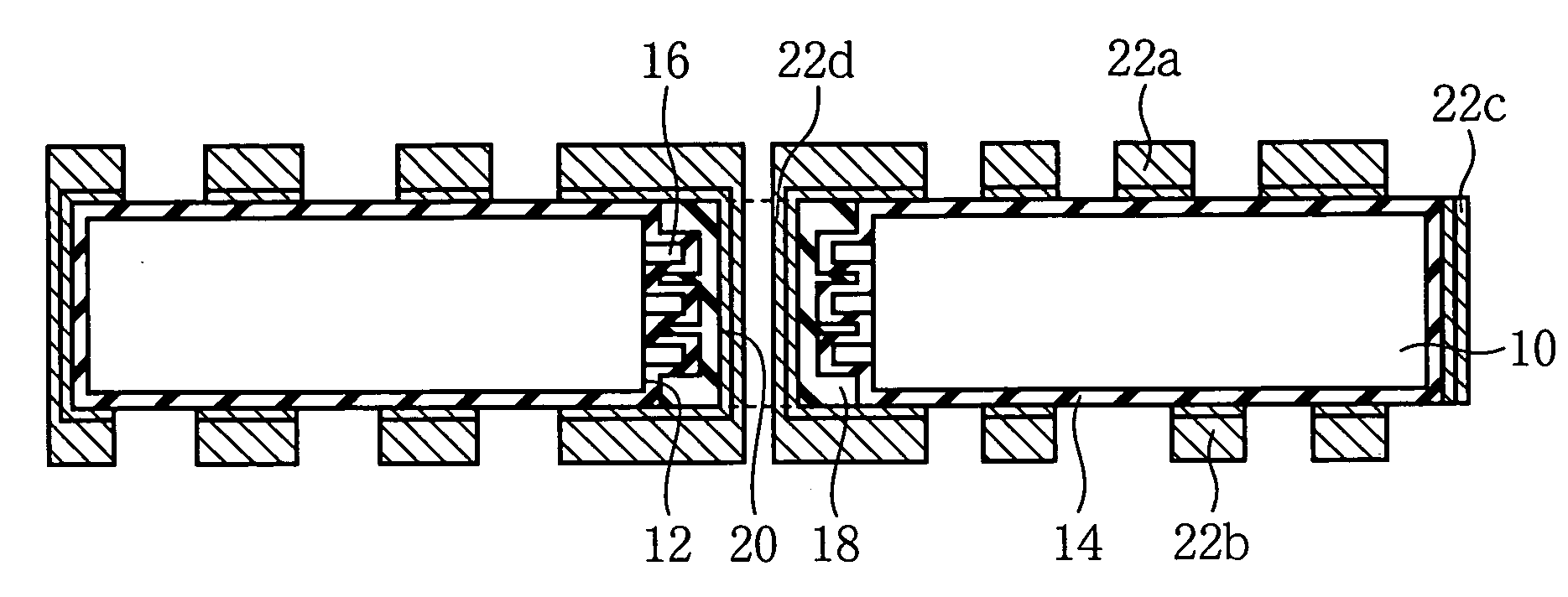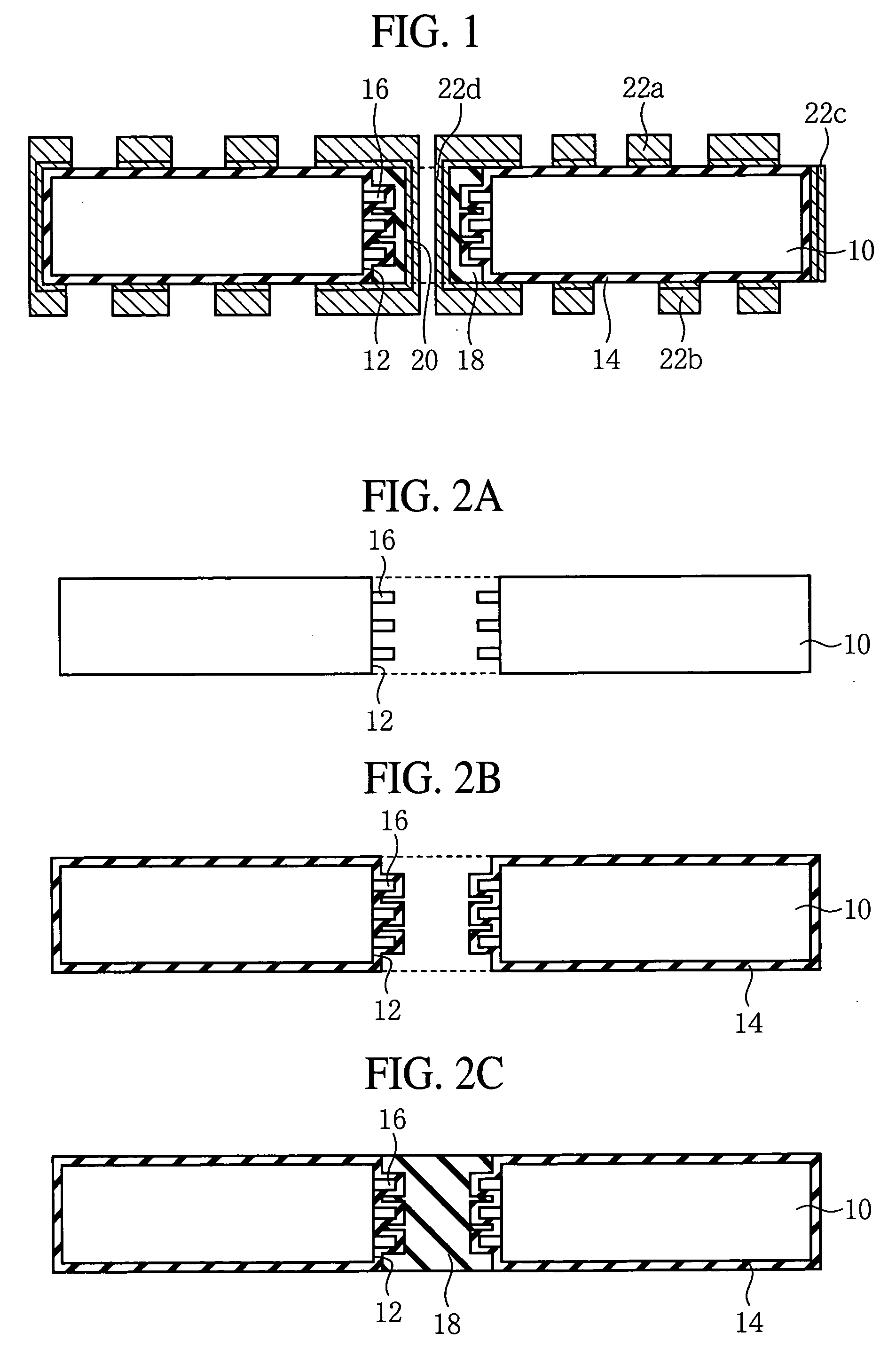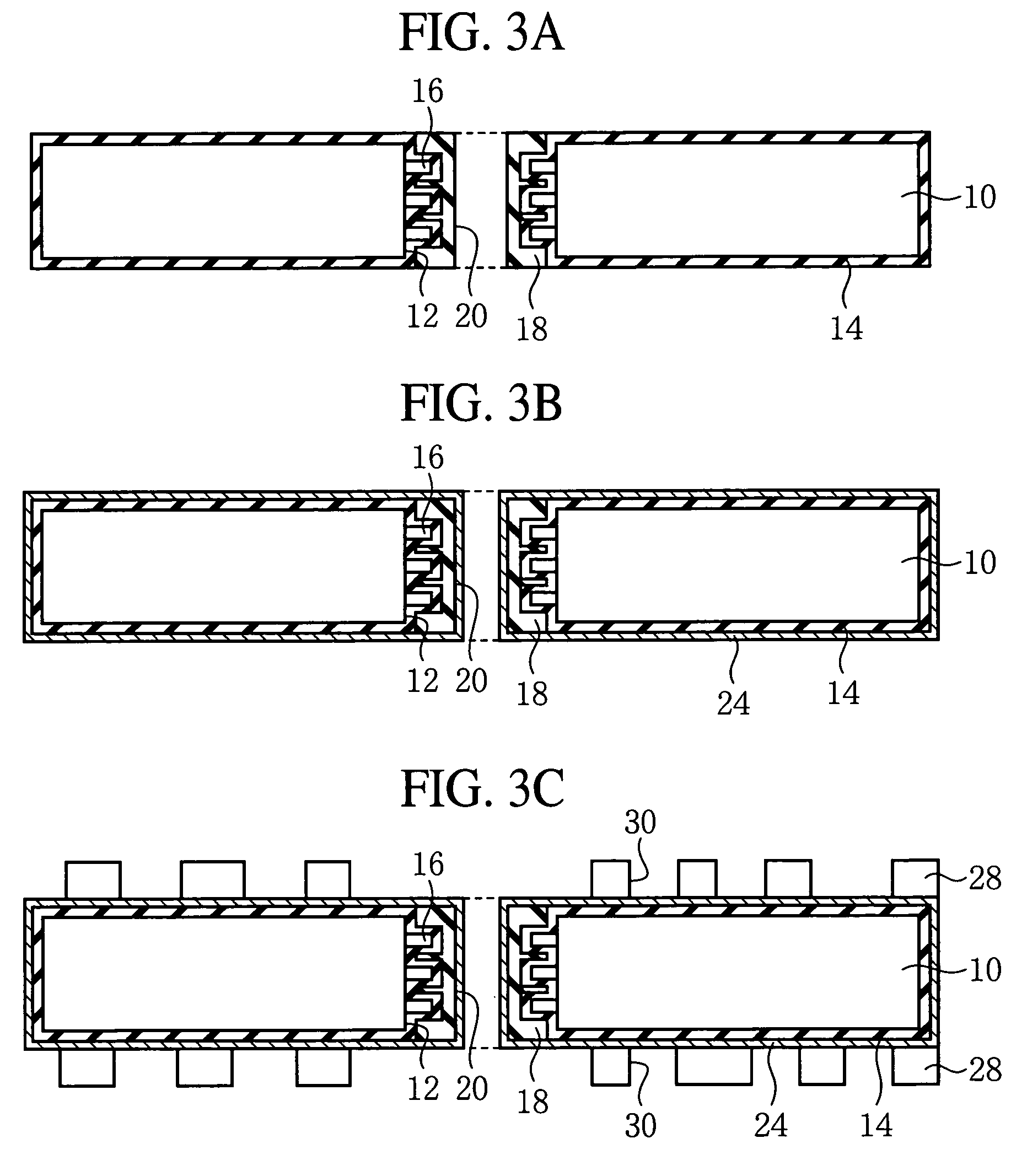Wiring board and method for fabricating the same
- Summary
- Abstract
- Description
- Claims
- Application Information
AI Technical Summary
Benefits of technology
Problems solved by technology
Method used
Image
Examples
first embodiment
A First Embodiment
[0029] The wiring board and the method for fabricating the same according to a first embodiment of the present invention will be explained with reference to FIGS. 1, 2A-2C, 3A-3C and 4A-4C. FIG. 1 is a sectional view of the wiring board according to the present embodiment, which illustrates a structure thereof. FIGS. 2A-2C, 3A-3C and 4A-4C are sectional views of the wiring board according to the present embodiment in the steps of the method for fabricating the same, which illustrate the method.
[0030] First, the wiring board according to the present embodiment will be explained with reference to FIG. 1.
[0031] A through-hole 12 is formed throughout a plate-shaped conductive core material 10 from the upper surface thereof to the undersurface thereof. A prescribed number of through-holes 12 corresponding to an wiring layout or others are formed in the conductive core material 10. Specifically, about 1000 through-holes 12, for example, are formed. The diameter of the ...
example 1
[0059] The conductive core material 10 was 5 sheets of the prepreg which was a composite of a 0.2 mm-carbon fiber sheet and a polyimide-group resin composition, which (the prepregs) were laminated by press in a 1.0 mm-thickness. The polyimide resin composition containing the carbon fiber sheet was mixed with an alumina filler by 10 weight % of the whole composition and a silica filler by 10 weight % of the whole composition. The alumina filler had an average particle diameter of below 7 μm including 7 μm and a 7 ppm / K thermal expansion coefficient. The silica filler had an average particle diameter of below 3 μm including 3 μm and a 3 ppm / K thermal expansion coefficient. The conductive core material 10 formed of these materials had, at 25-200° C., a 2 ppm / K average thermal expansion coefficient in the direction of expansion of the surface and a 80 ppm / K average thermal expansion coefficient in the thickness-wise direction. About 1000 through-holes 12 of a 0.5 mm-diameter were formed...
second embodiment
A Second Embodiment
[0066] The wiring board and the method for fabricating the same according to a second embodiment of the present invention will be explained with reference to FIGS. 5A-5B. FIGS. 5A-5B are sectional views of the wiring board according to the present embodiment in the steps of the method for fabricating the same. The same members of the present embodiment as the wiring board and the method for fabricating the same according to the first embodiment are represented by the same reference numbers not to repeat or to simplify their explanation.
[0067] The structure of the wiring board according to the present embodiment is substantially the same as the wiring board according to the first embodiment. The wiring board according to the present embodiment is different from the wiring board according to the first embodiment in that in the former, an insulation layer 14 is formed by electrodeposition. The method for fabricating the wiring board according to the present embodime...
PUM
| Property | Measurement | Unit |
|---|---|---|
| Time | aaaaa | aaaaa |
| Electrical conductor | aaaaa | aaaaa |
Abstract
Description
Claims
Application Information
 Login to View More
Login to View More - R&D
- Intellectual Property
- Life Sciences
- Materials
- Tech Scout
- Unparalleled Data Quality
- Higher Quality Content
- 60% Fewer Hallucinations
Browse by: Latest US Patents, China's latest patents, Technical Efficacy Thesaurus, Application Domain, Technology Topic, Popular Technical Reports.
© 2025 PatSnap. All rights reserved.Legal|Privacy policy|Modern Slavery Act Transparency Statement|Sitemap|About US| Contact US: help@patsnap.com



